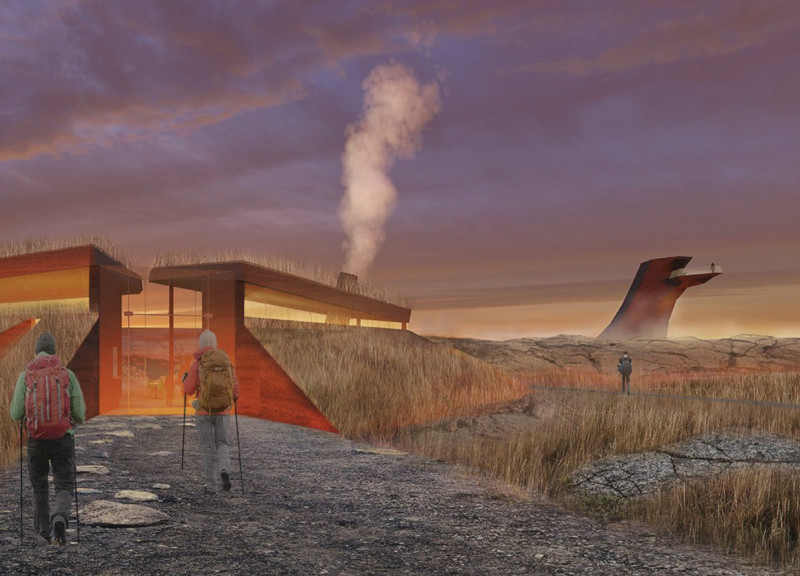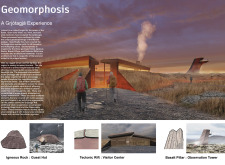5 key facts about this project
The Grjótagjá project is located in the Mývatn plateau in Iceland, an area known for its striking geological features and rich natural landscape. The design is focused on enhancing the experience of visitors while also preserving the delicate ecology of this unique environment. Inspired by natural forces such as tectonics and volcanic activity, the architecture seeks to establish a connection between human-made structures and the surrounding land.
Visitor Center
The Visitor Center is located near the entrance to the Karlagjá cave. It is designed with earth-sheltering techniques that allow it to blend into the topography. This space acts as a starting point for visitors, offering important information and a space to pause before exploring. Constructed from rammed concrete mixed with local volcanic aggregate, the center is both durable and fitting for its location.
Guest Huts
A set of guest huts provides simple accommodation for up to four people each, carefully placed above the Grjótagjá Rift. These off-grid huts focus on sustainability and comfort, ensuring guests can enjoy the views of the surrounding landscape. The design is straightforward, encouraging a close interaction with nature and promoting the concept of self-sufficient living.
Observation Tower
The observation tower stands at 12 meters tall, rising from the plateau and creating a notable feature within the landscape. This angular structure offers visitors a raised view of the rift below. It serves not only as a lookout point but also as an educational space, helping guests understand the geological processes that shaped the area. The tower provides a unique way to experience the land from a different height.
Pathways and Access
A network of pathways is included in the design to improve visitor movement across the site while protecting sensitive areas. A new parking area directs visitors to the Visitor Center, where clear paths lead to varied experiences, such as the secluded bathing spot at Kvennagjá, which is surrounded by birch trees. Each pathway is carefully planned to reduce the impact on fragile lava fields, encouraging a respectful relationship between people and the landscape.
The meticulous arrangement of features in the Grjótagjá project highlights the distinctive geological qualities of the area, offering an enriching experience for all visitors as they explore this remarkable landscape.






















































